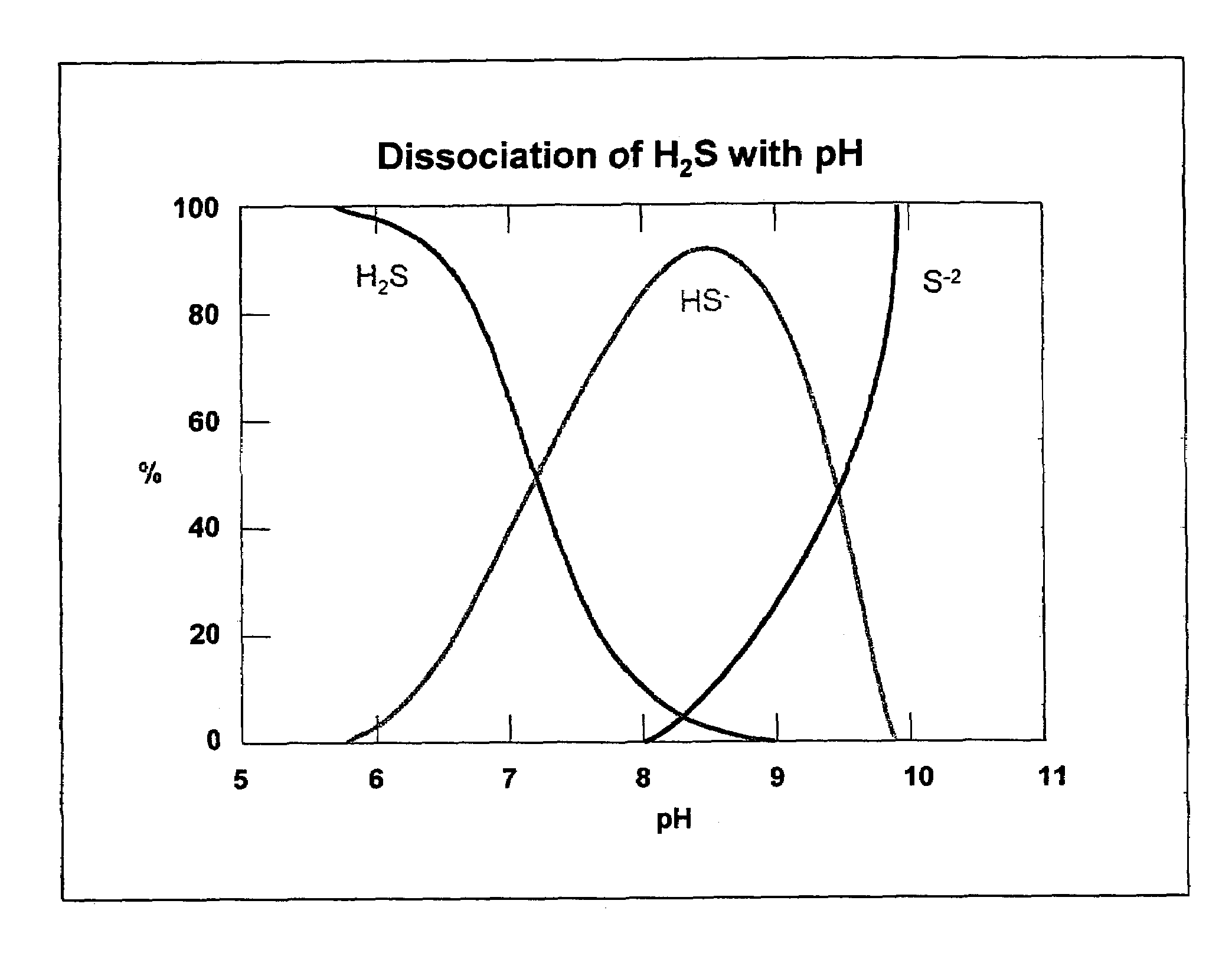Removing odoriferous sulfides from wastewater
a technology of odoriferous sulfides and wastewater, which is applied in the direction of biological water/sewage treatment, water/sewage treatment by oxidation, specific water treatment objectives, etc., to achieve the effects of promoting the growth of sulfide-oxidizing, nitrate-reducing bacteria, and inhibiting the biogenic production of h2s
- Summary
- Abstract
- Description
- Claims
- Application Information
AI Technical Summary
Benefits of technology
Problems solved by technology
Method used
Image
Examples
Embodiment Construction
[0149]The composition for controlling odor from waste products according to the present invention comprises a combination of a rapid-acting sulfide-consuming material and a longer acting material which prevents biogenic sulfide production. For water streams which do not contain sufficient sulfide-oxidizing bacteria, such bacteria are incorporated into the formulation. The rapid-acting sulfide consuming material is selected from the group which includes an iron salt, or a hypochlorite, a permanganate, a persulfate, a perborate, a periodate, a percarbonate, a chlorite, a nitrite, a chlorate, a perchlorate and a peroxide of ammonium, metal or alkali metal and mixtures thereof. The longer acting chemical which prevents the formation of biogenic sulfide is an ammonium, alkali, alkaline metal, or metal nitrate. As used herein, the term “controlling odor” means reducing and / or eliminating odor that is offensive to humans. Such odors are usually caused by volatile sulfides and other volatil...
PUM
| Property | Measurement | Unit |
|---|---|---|
| weight ratio | aaaaa | aaaaa |
| weight ratio | aaaaa | aaaaa |
| crystallization temperature | aaaaa | aaaaa |
Abstract
Description
Claims
Application Information
 Login to View More
Login to View More - R&D
- Intellectual Property
- Life Sciences
- Materials
- Tech Scout
- Unparalleled Data Quality
- Higher Quality Content
- 60% Fewer Hallucinations
Browse by: Latest US Patents, China's latest patents, Technical Efficacy Thesaurus, Application Domain, Technology Topic, Popular Technical Reports.
© 2025 PatSnap. All rights reserved.Legal|Privacy policy|Modern Slavery Act Transparency Statement|Sitemap|About US| Contact US: help@patsnap.com


